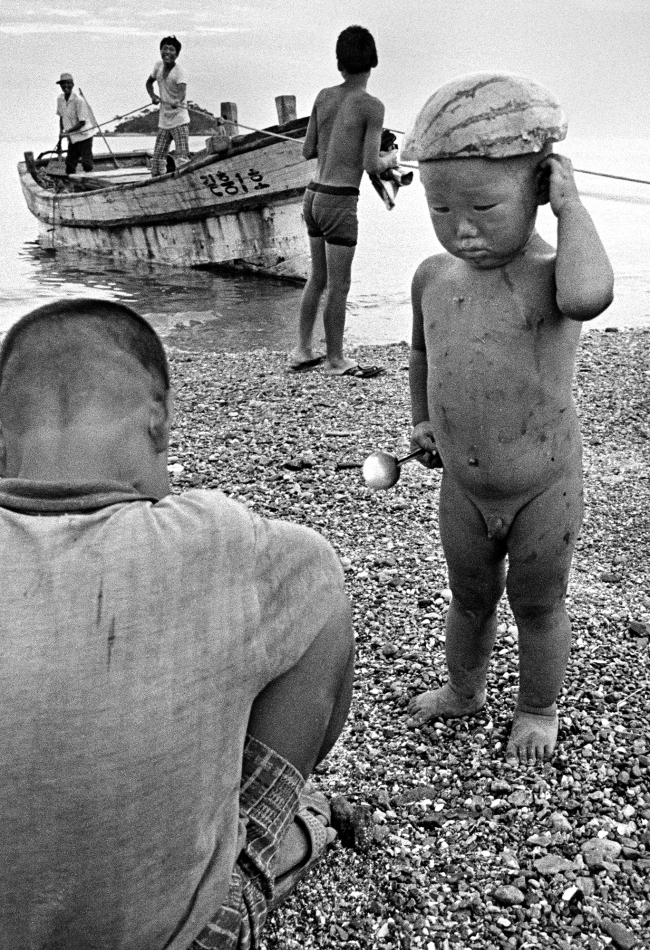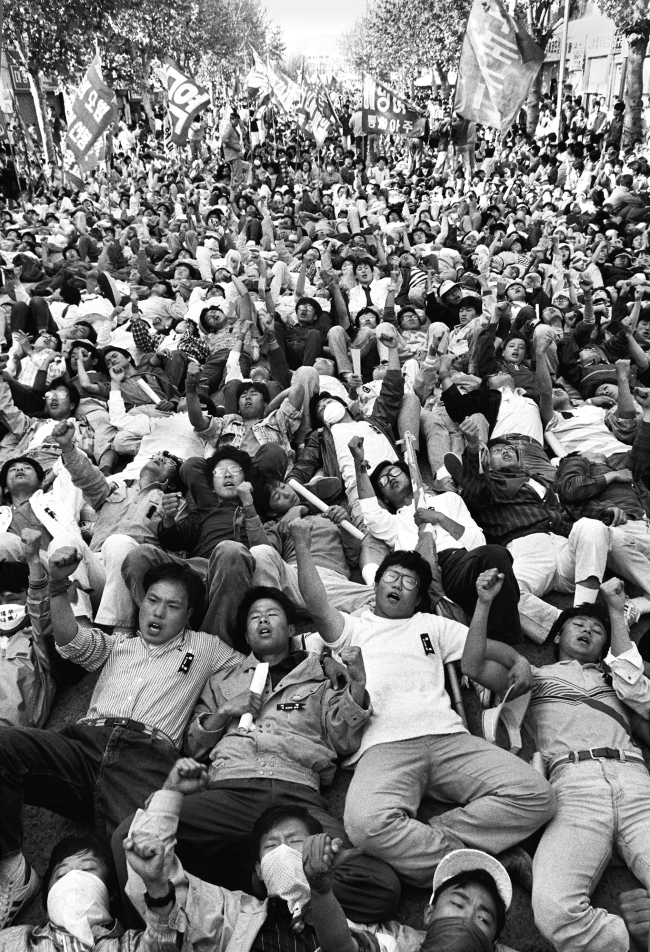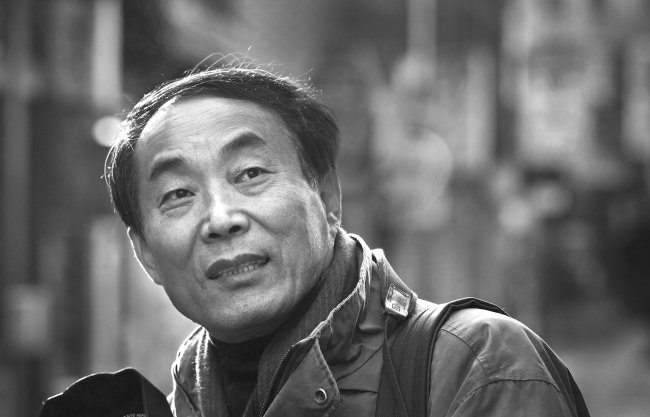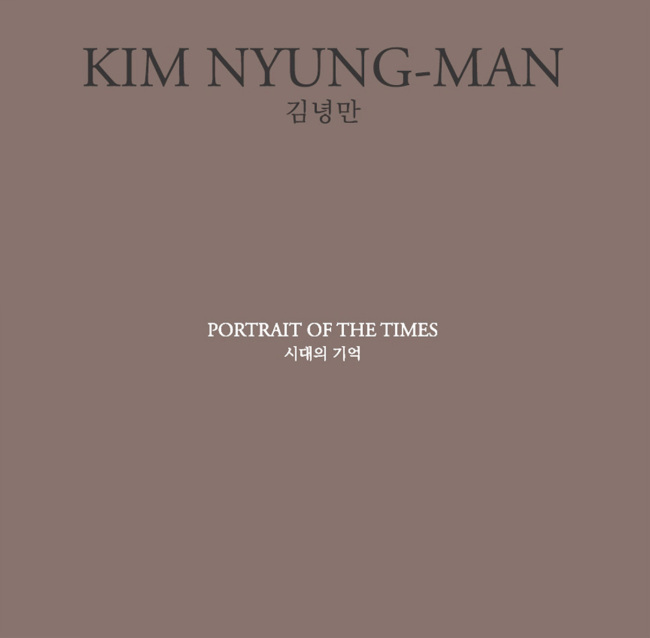 |
전라북도 부안, 1973(사진예술) |
사진작가 김녕만은 1970년대부터 최근까지 사진기자와 작가로써 현장에서 뛰며 기록한 사진 271점을 엮은 ‘시대의 기억’을 출간했다.
김녕만은 한국 현대사의 중요한 순간을 가장 가까이 기록했는데 농촌과 도시가 변화해 가는 모습, 광주 민주화 운동, 남한과 북한의 분단 현실 그리고 청와대 출입기자로서 대통령들의 숨겨진 모습을 카메라에 담았다.
김녕만의 사진집 ‘시대의 기억’은 ‘고향 그리고 새마을 운동’으로 1부를 시작해 전라북도 고창 출신으로 새마을 운동으로 농촌이 근대화되는 과정을 보여주고 있다. 2부 ‘서울’에서는 농촌에서 서울로 상경한 사람들로 북적이는 사람들의 모습을 보여주고 있다.
 |
전남대 앞에서 시위하고 있는 학생들, 1989(사진예술) |
3부 ‘민주화로 가는 길’에서는 광주에서 시작된 민주화 운동을 담고 있다. 당시 동아일보 사진기자로서 민주화 운동을 가장 가까이 지켜봤음에도 불구하고 신문에 나갈 수 없던 사진들을 보여주고 있다.
4부 ‘대통령’ 에서는 청와대 출입기자로 김영삼, 김대중 대통령의 재임기간 중 변화해 가는 모습을 담았다. 대통령들의 모습을 담은 여러 사진 중에 눈에 띄는 것은 1998년 김대중 대통령을 환영하는 미 백악관에서 열린 빌 클린턴 대통령 초청 만찬에 초대된 백남준 작가의 모습이다.
빌 클린턴 대통령이 백남준 작가를 환영하고 있는 중에 백남준 작가의 바지가 내려간 사건이었는데 김녕만은 백남준 작가 옆에 있던 보좌관이 바지를 올리기 전에 그 순간을 카메라로 포착했다.
5부 ‘통일을 향하여’에는 남한과 북한이 분단된 현실을 실향민들의 안타까운 표정, 판문점에서 대치하고 있는 남한과 북한 병사, 판문점에서 본 여러가지 상징물들을 통해 그려내고 있다.
(코리아헤럴드 이우영 기자
wylee@heraldcorp.com)
<관련 영문 기사>
Witnessing modern Korea through a lens
Photographer Kim Nyung-man captures major events in book ‘Portrait of Times’
When photographer Kim Nyung-man was standing in the photo line, watching President Bill Clinton greeting media artist Nam June Paik, he sensed something was going to happen and pressed the shutter-release button instinctively.
 |
Kim Nyung-man (Kim Nyung-man/Sajinyesul) |
Paik’s pants fell down, and the people around him failed to notice for a brief second. What Kim captured shows former President Clinton maintaining a smile at Paik, whose pants are down around his ankles, while two guards in the background look unmoved by what has just happened.
“There was a man next to Paik who pulled his pants up again, but I was able to take it before he pulled them up. It was so unexpected,” said Kim in a phone interview with The Korea Herald last week.
The 1998 photo was among hundreds that Kim selected for his photography book “Portrait of Times,” a compilation of photos taken during his 40-year career as a photographer and photojournalist.
Kim Nyung-man was there for many decisive moments that shaped the turbulent modern history of Korea as a photojournalist at Donga Ilbo newspaper for 20 years. His pictures captured the beginning of modernization in the 1970s, drastic changes in the rural and city landscape that followed, violent protests for democracy in the 1980s, and inside views of the presidential residence Cheong Wa Dae.
Of many important events, Kim said he was lucky to observe the 1980 civil uprising for democratization in Gwangju. But most of his pictures depicting students protesting and soldiers threatening them were not allowed to be published due to censorship by the authoritarian government.
“Photos that were in the newspaper were of veteran soldiers cleaning up the streets after violent protests,” Kim recalled. Only in 1993 was he finally able to publish the photos in a photography book. “I paid the debt in my mind to the people of Gwangju.”
Kim said he always carried two cameras: one for his work and one for taking photos embedded with his emotions and thoughts.
“If you step back from the scene, you can see many things,” Kim said. “I was planning to publish my own photography book one day. So I took both objective and subjective photos of major sociohistorical events.”

His photos of rural scenes during the economic development in the 1970s were noted for their honest portrayal of Korea. His photos of rural scenes are now included in the collections of the National Museum of Modern and Contemporary Art, Korea, and the Seoul Museum of Art.
One of the photos in the MMCA collection shows a naked child of 3 or 4 years old being scolded by his father. The viewer may break into laughter after spotting a spoon in the boy’s right hand and a “watermelon hat” on his head, hinting at the reason why the boy is being reprimanded.
The book features chapters that reassemble the process of Korea’s modernization, but ends with heartwarming photos of North and South Korean soldiers holding hands on a slippery hill, sad faces of separated families and the joy of a family reunion.
“It felt like I had to keep records of important events in modern Korean history. I feel deeply grateful for being there at each important stage,” he said.
By Lee Woo-young (wylee@heraldcorp.com)









![[Herald Interview] 'Trump will use tariffs as first line of defense for American manufacturing'](http://res.heraldm.com/phpwas/restmb_idxmake.php?idx=644&simg=/content/image/2024/11/26/20241126050017_0.jpg)
![[Exclusive] Hyundai Mobis eyes closer ties with BYD](http://res.heraldm.com/phpwas/restmb_idxmake.php?idx=644&simg=/content/image/2024/11/25/20241125050044_0.jpg)
![[Herald Review] 'Gangnam B-Side' combines social realism with masterful suspense, performance](http://res.heraldm.com/phpwas/restmb_idxmake.php?idx=644&simg=/content/image/2024/11/25/20241125050072_0.jpg)